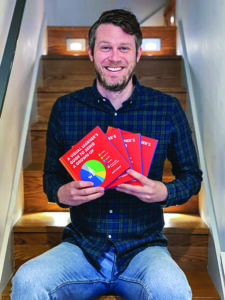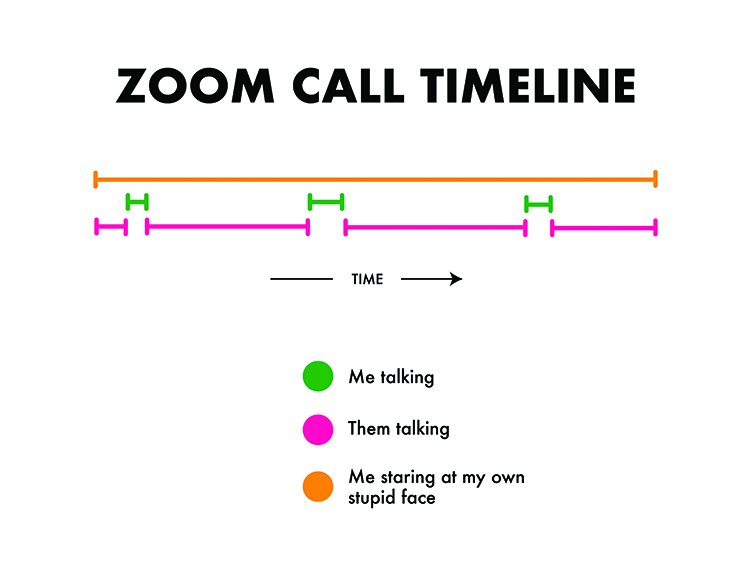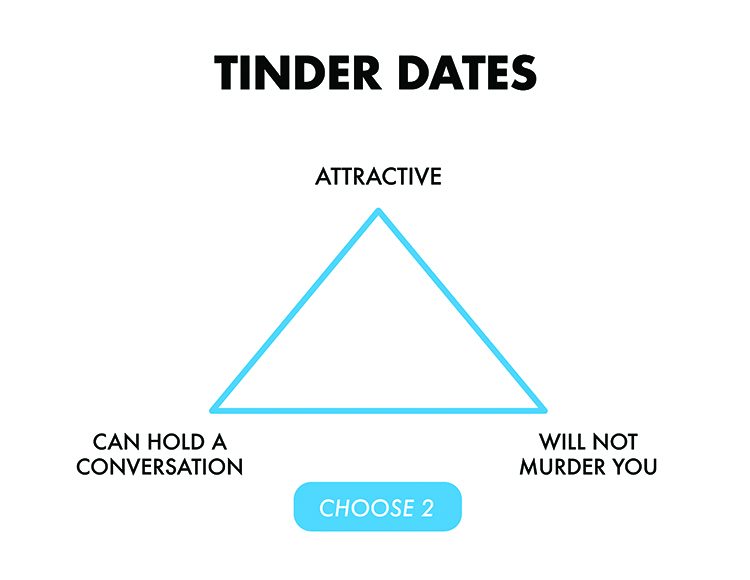Matt Shirley ’04 maps out the ups and downs of adulting in his new self-help guide.
There are many reasons why Matt Shirley ’04 could never murder someone.

First of all, he doesn’t have any weapons. Then there’s his weak stomach. Most of all, though, murder sure does sound like a lot of work. Shirley is forthcoming about the reasons for his crime avoidance. In fact, he made a bar graph measuring the level of each of his hesitancies toward murder and posted the chart to his Instagram account.
He’s not some weirdo: Shirley has made a career out of the charts he posts on social media, mixing his penchant for dark humor with topical, relatable material. Those charts got him noticed — he now creates them for marketing departments at businesses like T-Mobile, and his book, A Visual Learner’s Guide to Being a Grown-Up (Running Press, 2021), was released in April. One review for the book: “It might be my favorite thing to emerge from the dumpster fire of 2020 that doesn’t rhyme with ‘Maxine.’”
Entering the world of charts with a dry erase marker in hand, Shirley began crafting his messages via whiteboard in 2017. Back then, he spent his days at a “boring desk job” and needed an outlet to spark his creativity. To keep things interesting, he challenged himself to make one new chart each day: “I started doing it just because I wanted to have something to hold myself accountable for,” he says. He’s since ditched the corporate life and the marker, trading them for full-time innovation and digital software.

Zeroing in on the topic for A Visual Learner’s Guide to Being a Grown-Up was easy for Shirley because, like his charts, he drew from his lived experience. On the cusp of 40, he’s meditated on the modern definition of adulthood for years. Unmarried, childless, and career-focused, he’s pondered it even more as he’s approached midlife. “I think a lot of people are struggling with this idea of what it means to be a grown-up,” he says, “because it’s not like our parents, where they would just buy a house, have kids.”
The guide is divided into the usual life sections, such as work, dating and breakups, and growing old. Like the infographics he displays on Instagram, the book is full of witty breakdowns of the ups and downs of adulting, including a corporate lingo translator, “The Periodic Table of Social Anxiety,” and a bad habits timeline from ages 0–90 (Spoiler: You’ll develop terrible habits, then do everything in your power to undo those habits with very little success).

Looking into his future, Shirley sees more books. But for now, he’ll continue his process of waking up, driving to a coffee shop, opening Adobe Illustrator, and starting a new chart. “If I’m feeling creative, it’ll be based off of something that has happened to me recently or something that I just think is funny out there in the world. If I’m feeling not creative, I’ll go to the well of things that I know does well, like anxiety or … airplanes.”
“[Colgate] influenced my way of thinking about growing up, especially because that felt like my formative years,” says Shirley, who was an international relations major and forward on the basketball team.
